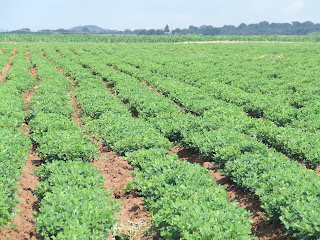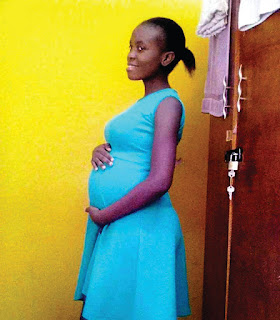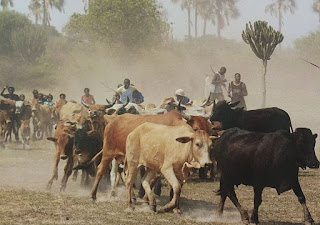DOREEN NAWA, Lusaka
THE idea that community schools are a “fallback option” for learners is challenged by the fact that most pupils do not tend to get far in their education due to financial constraints.
It is a well-known fact that education is a basic human right and plays a key role in human, social, and economic development.
But pupils at Mazyopa Community School are not privileged enough to enjoy this right because of the non-availability of funds to support their education.
Memory Nachamba, 18, a Grade Nine pupil at the community school, is one of 19 Grade Nine pupils who missed the examinations because she did not pay examination fees.
According to a notice on the head teacher’s door, the pupils in Grade Nine are required to pay up to K900 to sit for the examinations. It is an amount most households in Mazyopa can ill-afford.
“It hurts to drop out of school because of lack of money,” says Memory. “My parents tried their best but they could not afford paying my examinations fees. The school management also tried but all to no avail,” Memory says.
Memory says despite great progress in the last few years, some children are still denied their right to education in Mazyopa Township, especially at the time of writing final examinations for grades Seven, Nine and 12.
“I long for free education in Zambia, because free education should really be free education and not what it is in Zambia. For me this kind of education is restrictive,” she says.
For Memory, restricted access to education through examination fees is one of the surest ways of transmitting poverty from generation to generation.
Memory is aware that education reduces poverty, boosts economic growth and increases one’s income.
She knows that education increases a person’s chances of having a healthy life and that it reduces maternal deaths because of delayed child bearing.
“Education can promote gender equality, reduce child marriage, and promote peace. In sum, education is one of the most important investments a country can make in its people and its future. But in Zambia, it doesn’t seem so for us pupils at Mazyopa Community School,” she says.
Another pupil, Winter Sianyulu, says missing Grade Nine examinations because of school fees is unfair to his future.
The 17-year-old is an orphan who depends on his grandmother for financial support.
“Eighteen of us in Grade Nine from Mazyopa Community School are not writing the examinations because we did not pay the examination fees. It is such a depressing reality but again, there is nothing I can do. Currently, I do part-time jobs like cleaning people’s yards and I am paid between K20 to K30 depending on the kind of work, but the money is not enough to pay my fees as I also supplement on the household daily needs,” says Winter.
In 2006, Frank Kaonga gave up his land to start a community school in Mazyopa, an illegal squalid settlement north Lusaka that has now been legalised.
“As a community, a meeting was held and it was discovered that children faced a lot of challenges, like not going to school and covering long distances when going to school. After analyzing the challenges, we agreed to start a community school beginning with pre-school. And because of my passion for education, I gave up this land,” says Mr Kaonga.
“We had over 800 pupils from pre-school to Grade 12, but now we have 300, the number has reduced because we no longer feed them. As at now, we have a boarding school and this is not easy; we have 11 girls. We also have Grade 12’s that could not write their examinations due to funds. These are eight,” he says.
Mazyopa Community School also faces a challenge of volunteer teachers not lasting because of lack of support.
The school has 11 teachers.
A third year student under a Regional Psychosocial Support Initiative (REPSSI) programme called Community Based Work with Children and Youth (CBWCY), Febby Mwanza is also a volunteer counsellor at Mazyopa Community School.
She says it is no longer enough just for children to be in school but for them to be able to progress through writing examinations at crucial levels like grades Seven, Nine and 12.
Ms Mwanza says from her experience after being attached to the school four months ago, much more needs to be done to educate pupils in Mazyopa Community beyond just a basic education.
“This area is youthful, with a lot of challenges that restrict access to education for these youths,” she says.
Ms Mwanza adds: “Childhood education gives young people a chance to develop social awareness and is key to cross-cultural understanding. When children are taught social studies, geography, and history they have a better understanding of what life is like for other people. This understanding is the first step in child development anywhere.
For Ms Mwanza, educated teenage girls are less likely to marry early and become very young mothers and also educated people are less likely to fall victim to a preventable disease.
“Through education, young people can learn how to maintain their own health, which will, in turn, be less of a burden to their community. Education is the glue that holds our society together. It is the step-up necessary to see above what is around you,” she says.
But for many of the young people in Mazyopa Township such talk about education and its benefits sounds too lofty to attain for now.
PUBLISHED IN THE ZAMBIA DAILY MAIL ON November 17, 2019. LINK: http://www.daily-mail.co.zm/mazyopa-girls-too-poor-to-pay-for-education/
THE idea that community schools are a “fallback option” for learners is challenged by the fact that most pupils do not tend to get far in their education due to financial constraints.
It is a well-known fact that education is a basic human right and plays a key role in human, social, and economic development.
But pupils at Mazyopa Community School are not privileged enough to enjoy this right because of the non-availability of funds to support their education.
Memory Nachamba, 18, a Grade Nine pupil at the community school, is one of 19 Grade Nine pupils who missed the examinations because she did not pay examination fees.
According to a notice on the head teacher’s door, the pupils in Grade Nine are required to pay up to K900 to sit for the examinations. It is an amount most households in Mazyopa can ill-afford.
“It hurts to drop out of school because of lack of money,” says Memory. “My parents tried their best but they could not afford paying my examinations fees. The school management also tried but all to no avail,” Memory says.
Memory says despite great progress in the last few years, some children are still denied their right to education in Mazyopa Township, especially at the time of writing final examinations for grades Seven, Nine and 12.
“I long for free education in Zambia, because free education should really be free education and not what it is in Zambia. For me this kind of education is restrictive,” she says.
For Memory, restricted access to education through examination fees is one of the surest ways of transmitting poverty from generation to generation.
Memory is aware that education reduces poverty, boosts economic growth and increases one’s income.
She knows that education increases a person’s chances of having a healthy life and that it reduces maternal deaths because of delayed child bearing.
“Education can promote gender equality, reduce child marriage, and promote peace. In sum, education is one of the most important investments a country can make in its people and its future. But in Zambia, it doesn’t seem so for us pupils at Mazyopa Community School,” she says.
Another pupil, Winter Sianyulu, says missing Grade Nine examinations because of school fees is unfair to his future.
The 17-year-old is an orphan who depends on his grandmother for financial support.
“Eighteen of us in Grade Nine from Mazyopa Community School are not writing the examinations because we did not pay the examination fees. It is such a depressing reality but again, there is nothing I can do. Currently, I do part-time jobs like cleaning people’s yards and I am paid between K20 to K30 depending on the kind of work, but the money is not enough to pay my fees as I also supplement on the household daily needs,” says Winter.
In 2006, Frank Kaonga gave up his land to start a community school in Mazyopa, an illegal squalid settlement north Lusaka that has now been legalised.
“As a community, a meeting was held and it was discovered that children faced a lot of challenges, like not going to school and covering long distances when going to school. After analyzing the challenges, we agreed to start a community school beginning with pre-school. And because of my passion for education, I gave up this land,” says Mr Kaonga.
“We had over 800 pupils from pre-school to Grade 12, but now we have 300, the number has reduced because we no longer feed them. As at now, we have a boarding school and this is not easy; we have 11 girls. We also have Grade 12’s that could not write their examinations due to funds. These are eight,” he says.
Mazyopa Community School also faces a challenge of volunteer teachers not lasting because of lack of support.
The school has 11 teachers.
A third year student under a Regional Psychosocial Support Initiative (REPSSI) programme called Community Based Work with Children and Youth (CBWCY), Febby Mwanza is also a volunteer counsellor at Mazyopa Community School.
She says it is no longer enough just for children to be in school but for them to be able to progress through writing examinations at crucial levels like grades Seven, Nine and 12.
Ms Mwanza says from her experience after being attached to the school four months ago, much more needs to be done to educate pupils in Mazyopa Community beyond just a basic education.
“This area is youthful, with a lot of challenges that restrict access to education for these youths,” she says.
Ms Mwanza adds: “Childhood education gives young people a chance to develop social awareness and is key to cross-cultural understanding. When children are taught social studies, geography, and history they have a better understanding of what life is like for other people. This understanding is the first step in child development anywhere.
For Ms Mwanza, educated teenage girls are less likely to marry early and become very young mothers and also educated people are less likely to fall victim to a preventable disease.
“Through education, young people can learn how to maintain their own health, which will, in turn, be less of a burden to their community. Education is the glue that holds our society together. It is the step-up necessary to see above what is around you,” she says.
But for many of the young people in Mazyopa Township such talk about education and its benefits sounds too lofty to attain for now.
PUBLISHED IN THE ZAMBIA DAILY MAIL ON November 17, 2019. LINK: http://www.daily-mail.co.zm/mazyopa-girls-too-poor-to-pay-for-education/














